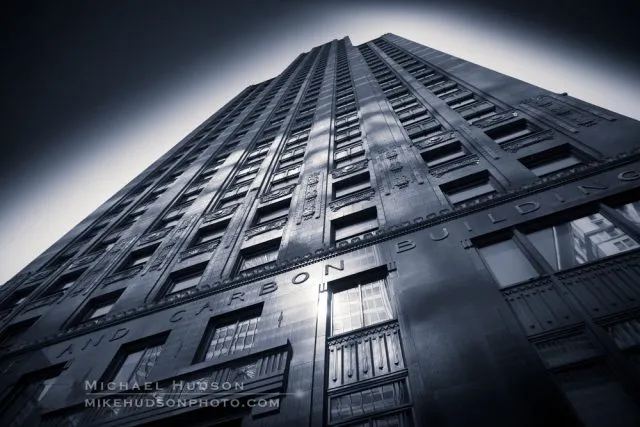Illinois, a Midwestern state in the US, is known not only for Chicago, one of the nation’s largest and most vibrant cities, but also for its unique architectural treasures, many bearing the distinct mark of the Victorian era. This architectural style, prevalent from the mid-to-late 19th century, is renowned for its intricate details and ornate embellishments, reflecting the wealth and power of the era’s elite.
Victorian structures in Illinois are more than mere buildings; they are historical witnesses, silently narrating the state’s and the nation’s journey through time. These architectural masterpieces harmoniously blend classic European aesthetics with American ingenuity, resulting in a captivating and unique style.
The Carbide & Carbon Building: An Art Deco Jewel in Chicago
Located at 230 North Michigan Avenue, Chicago, the Carbide & Carbon Building stands as one of the city’s most iconic architectural landmarks. Designed by the two sons of renowned architect Daniel Burnham, the building embodies the Art Deco style, an art and architecture movement popular in the 1920s and 1930s.

The Carbide & Carbon Building is notably constructed primarily of black granite and terra cotta, crowned with a gold-leaf top. The architects’ original vision was to create a structure resembling a giant champagne bottle amidst the cityscape. The unique blend of colors and materials bestows upon the building an aura of luxury and allure, solidifying its status as an architectural symbol of Chicago.
The Arcade: A Victorian-Era Architectural Gem in Cleveland
Although located in Cleveland, Ohio, The Arcade serves as a prime example of Victorian architecture and is a must-see destination for history and architecture enthusiasts. Built in the late 19th century, The Arcade is one of America’s oldest indoor shopping malls, steeped in Victorian-era charm.

The five-story building features four tiers of ornate cast-iron balconies. The Arcade’s centerpiece is a stunning 300-foot-long glass skylight, creating a spacious and airy interior bathed in natural light. More than just a shopping center, The Arcade is an architectural marvel showcasing the elegance and sophistication of the Victorian era. A visit to The Arcade offers a journey back in time, allowing visitors to experience the charm and grandeur of a bygone era.
The Influence of Victorian Architecture on Other Structures
While purely Victorian architectural structures may not be abundant in Illinois, the style has significantly influenced numerous buildings and residential areas throughout the state. Elements such as steeply pitched roofs, bay windows, decorative columns, and intricate carvings, characteristic of Victorian architecture, have been incorporated into various unique and captivating structures.
Historic Residential Districts
Many historic residential districts in Illinois, particularly in Chicago and other major cities, feature homes built in the Victorian style or incorporating elements of the style. These homes often boast elaborately decorated facades with details like columns, porches, and bay windows.
Government and Educational Buildings
Several government and educational buildings in Illinois also exhibit Victorian influences or incorporate elements of the style. Constructed primarily in the late 19th and early 20th centuries, these buildings reflect the affluence and authority of the government and educational institutions of the time.
Preservation and Promotion of Victorian Architecture
Recognizing the historical and cultural significance of Victorian architecture, the government and people of Illinois are actively engaged in preserving and promoting these legacies. Numerous buildings have undergone restoration and maintenance, and many have been designated as historical landmarks for enhanced protection.
Furthermore, tourism and educational programs showcase the beauty and value of Victorian architecture to the public. These endeavors not only preserve cultural heritage but also contribute to tourism development and raise awareness of Illinois’ rich history and architecture.
Conclusion
The Victorian-era architectural gems of Illinois represent a captivating intersection of history, culture, and art. These structures are more than just buildings; they are living testaments to the state’s and the nation’s past. Exploring and preserving these architectural marvels allows us to gain a deeper understanding of our history while contributing to a richer future. When visiting Illinois, be sure to explore these unique structures and experience the timeless charm and elegance of the Victorian era.